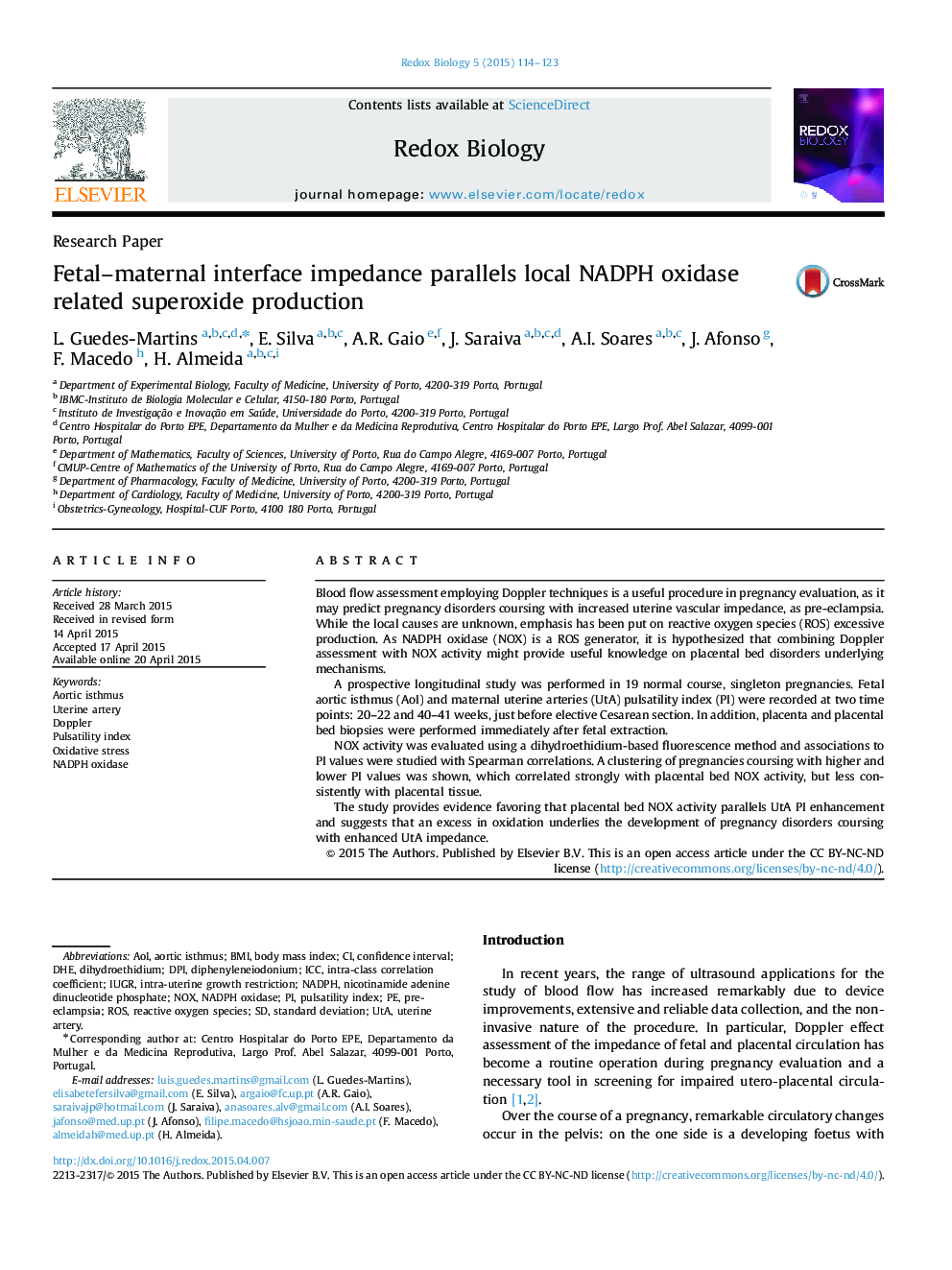| Article ID | Journal | Published Year | Pages | File Type |
|---|---|---|---|---|
| 1923149 | Redox Biology | 2015 | 10 Pages |
•Uterine artery impedance reflects uterine placental bed perfusion along pregnancy.•It lowers along normal pregnancy, in normal range clusters, and its increase predicts poor outcome.•Cluster levels correlate positively with superoxide generation in the placental bed at term.•Local excessive oxidation likely associates to abnormally high impedance and related disorders.
Blood flow assessment employing Doppler techniques is a useful procedure in pregnancy evaluation, as it may predict pregnancy disorders coursing with increased uterine vascular impedance, as pre-eclampsia. While the local causes are unknown, emphasis has been put on reactive oxygen species (ROS) excessive production. As NADPH oxidase (NOX) is a ROS generator, it is hypothesized that combining Doppler assessment with NOX activity might provide useful knowledge on placental bed disorders underlying mechanisms.A prospective longitudinal study was performed in 19 normal course, singleton pregnancies. Fetal aortic isthmus (AoI) and maternal uterine arteries (UtA) pulsatility index (PI) were recorded at two time points: 20–22 and 40–41 weeks, just before elective Cesarean section. In addition, placenta and placental bed biopsies were performed immediately after fetal extraction.NOX activity was evaluated using a dihydroethidium-based fluorescence method and associations to PI values were studied with Spearman correlations. A clustering of pregnancies coursing with higher and lower PI values was shown, which correlated strongly with placental bed NOX activity, but less consistently with placental tissue.The study provides evidence favoring that placental bed NOX activity parallels UtA PI enhancement and suggests that an excess in oxidation underlies the development of pregnancy disorders coursing with enhanced UtA impedance.
Graphical abstractFigure optionsDownload full-size imageDownload as PowerPoint slide
